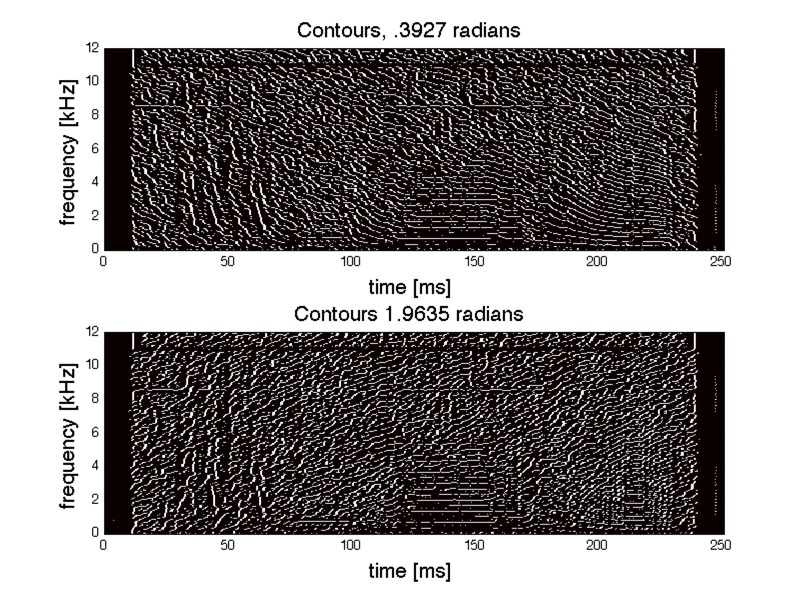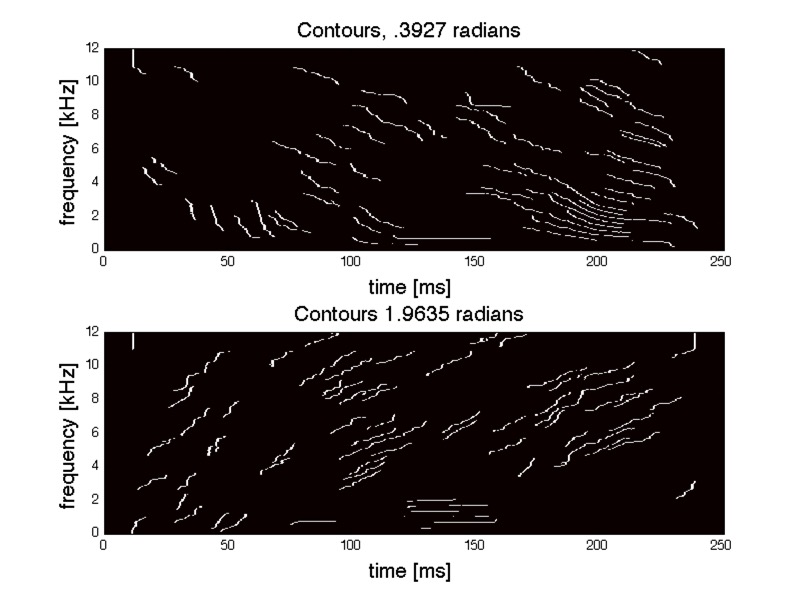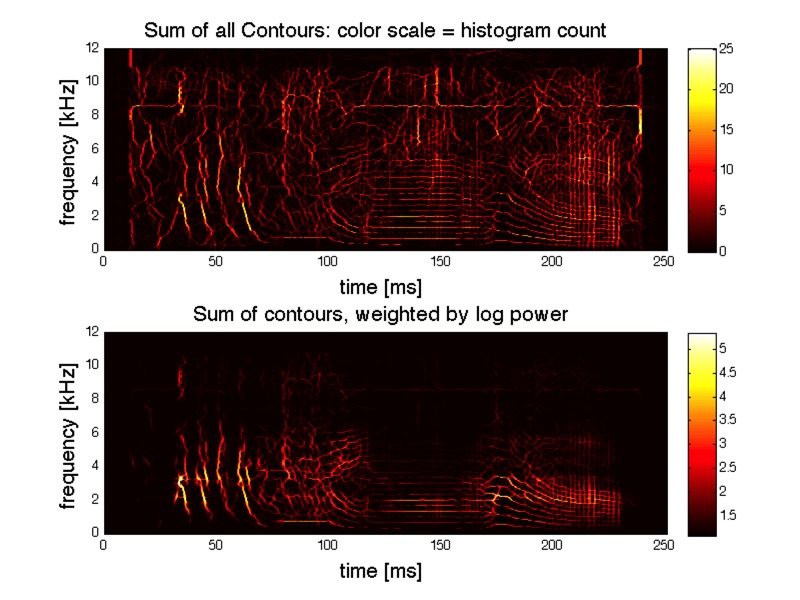What are the essential steps in the algorithm?
01/07/12 11:20
The method first computes contours for many time-scales and angles. The edges of the contours are derived from a generalization of reassigned sonograms, and share similarities with spectral derivatives. Edges are grouped together to form objects with a definite beginning and end. Each contour has an associated waveform. The sum of all contour waveforms for a given time-scale and angle provides a perfect representation of any signal. Since every time-scale and angle provides a complete representation of the sound, the collection of all contours is over-complete.
Shown next are contours for a single time-scale, and two specific angles.

Next, contours shorter than some percentile are discarded. (98 percentile in the next image.)

Then, all long contours from all angles and all time-scales are added together. The binary contours can be added to produce a two-dimensional histogram (top image), or weighted by local power in the time-frequency plane (bottom). In the latter case, each contour is weighted by the sonogram computed in the same time-scale as the contour.
